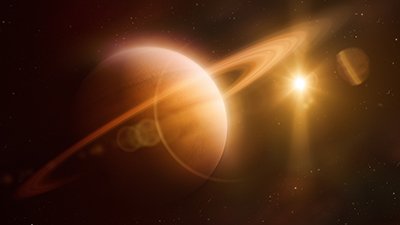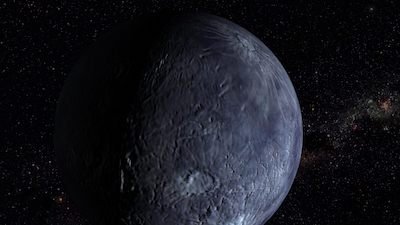
Easy Come, Easy Go: Pluto’s Changing Atmosphere
Why Pluto’s atmosphere changes between perihelion and aphelion in its 248-year orbit around the sun and what that means for the age of the dwarf planet
When the New Horizons space probe flew past Pluto in 2015, it obtained a good density profile (density as a function of altitude) of Pluto’s thin atmosphere. We have known for more than three decades that Pluto has an atmosphere. How did we know this? Pluto’s orbit occasionally causes it to pass in front of a star as seen from earth, an event we call an occultation. An occulting body with no atmosphere will cause the light of the star to wink out very abruptly and then suddenly reappear a few minutes later when the star emerges from behind the body. But if a body has an atmosphere, even a thin one, the star’s light will fade out and recover more gradually. By studying how starlight dims and recovers during a Plutonian occultation, scientists can deduce some information about Pluto’s atmosphere. This was first done in 1988, and it has been repeated several times since (suitable occultations are not that common, usually happening every few years).
Pluto’s orbit is very eccentric, causing the distance between the sun and Pluto to change throughout its 248-year orbit.
These occultation measurements revealed that Pluto’s atmosphere was expanding. What was causing this? Like earth, Pluto’s atmosphere is dominated by nitrogen. However, unlike earth, Pluto’s surface temperature is low enough to freeze nitrogen. Pluto’s orbit is very eccentric, causing the distance between the sun and Pluto to change throughout its 248-year orbit. We often measure solar system distances in terms of the astronomical unit (AU), the average distance between the earth and sun, 93 million miles. At perihelion (closest approach to the sun), Pluto is 29.7 AU from the sun. At the other extreme, when at aphelion, Pluto is 49.3 AU from the sun. This large change in distance from the sun results in nearly a factor of three in the amount of solar energy reaching Pluto over the course of its orbit. Consequently, Pluto’s surface temperature ought to be noticeably warmer near perihelion than at aphelion. When Pluto is near perihelion, some of its surface nitrogen ice sublimes into gas to swell its atmosphere. But as Pluto approaches aphelion, gas in the atmosphere freezes out, reducing the amount of atmosphere Pluto has.
Pluto reached perihelion in 1989, so why didn’t its atmosphere reach maximum size then? The answer is thermal inertia. It takes time to heat objects and to cool them. A similar thing happens on earth each winter and summer on earth. The respective hemispheres on earth receive maximum heat from the sun on the summer solstice (June 22 in the Northern Hemisphere) and minimum heat from the sun on the winter solstice (December 22 in the Northern Hemisphere). However, because of thermal inertia, locations in either hemisphere experience their warmest average temperatures about a month after the summer solstice and the coolest average temperatures about a month after the winter solstice. That is a lag of about 8% over the course of the year.
The inflation and deflation of Pluto’s atmosphere are not due to seasonal changes from its axial tilt. Rather, it is due to the drastically different amount of energy Pluto receives from the sun between perihelion and aphelion. We now have evidence that Pluto’s atmosphere is no longer expanding. A well-observed occultation in 2018 showed no increase in Pluto’s atmosphere from an occultation in 2015. This would indicate about a 10% lag time. It is expected that Pluto’s atmosphere will now shrink for the next half Pluto year, well over a century here on earth.
In addition to the cyclical change in Pluto’s atmosphere, there is a long-term change occurring in Pluto’s atmosphere. Pluto’s gravity is weak, so there is a slow loss of nitrogen gas to space. In an earlier article, I had suggested that this gas loss may indicate that Pluto is younger than billions of years, but now it seems Pluto has a huge reserve of nitrogen ice that could gradually sublime to replace the gas lost and so maintain a steady state.
This new information reveals a cyclical process in Pluto’s atmosphere, so by itself tells us nothing about Pluto’s age.
Similarly, some people may get the impression that this recent study of Pluto’s atmosphere might be an indication of age, whether Pluto was recently created or is billions of years old. However, this new information reveals a cyclical process in Pluto’s atmosphere, so by itself tells us nothing about Pluto’s age. So, how do we know Pluto’s age? We have an Eyewitness statement documenting its “birth” on the fourth day of the creation week (Genesis 1:14-19).

Answers in Genesis is an apologetics ministry, dedicated to helping Christians defend their faith and proclaim the good news of Jesus Christ.
- Customer Service 800.778.3390
- Available Monday–Friday | 9 AM–5 PM ET
- © 2025 Answers in Genesis



